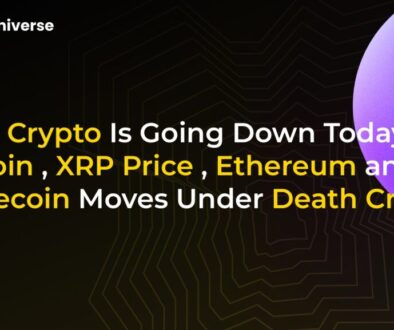When Will Bitcoin Be Worth $1 Million?

Bitcoin’s Unstoppable Rise: Is $1 Million the Next Target?
Bitcoin’s journey has been nothing short of extraordinary. After shattering expectations and flirting with the $100,000 mark in late 2024, the question on everyone’s mind has shifted from if, to
Following a period of consolidation below $25,000 for much of 2023, Bitcoin roared back to life. Key catalysts, including the anticipation and eventual approval of spot Bitcoin ETFs in the US, ignited a powerful rally. This momentum, further fueled by shifting political landscapes and perceived friendlier regulatory outlooks post-US elections, propelled BTC past $40,000, $60,000, and towards the psychological $100,000 barrier.
But climbing from $100,000 to $1,000,000 requires significantly more fuel. What factors could realistically drive such a monumental increase?
The Roadmap to a Seven-Figure Bitcoin
Reaching a $1 million price per Bitcoin isn’t just about market hype; it necessitates fundamental shifts in adoption and capital inflow. Achieving this milestone would require Bitcoin’s total market capitalization to exceed $21 trillion (based on its maximum supply of 21 million coins). Here’s what experts believe needs to happen:
1. Widespread Institutional Adoption
For Bitcoin to reach $1 million, it needs to attract capital on a scale similar to established stores of value like gold. This means large pension funds, sovereign wealth funds, and asset managers allocating significant portions of their portfolios to Bitcoin. Spot Bitcoin ETFs were a crucial first step, providing regulated access. Further integration into traditional finance could potentially add trillions ($2T – $3T or more) to Bitcoin’s market cap.
2. Major Corporate Treasury Integration
Imagine large multinational corporations holding Bitcoin on their balance sheets as a reserve asset, similar to how some currently hold cash or gold. This trend, pioneered by companies like MicroStrategy, needs to become mainstream. If a significant number of Fortune 500 companies adopted this strategy, it could inject another $1 trillion to $2 trillion into the market.
3. Explosive Retail Growth in Emerging Markets
While developed nations have seen substantial retail investment, the next wave of growth could come from emerging economies. In regions grappling with high inflation or unstable local currencies, Bitcoin can be seen as a vital tool for wealth preservation and cross-border payments. Increased accessibility and adoption in these markets could significantly broaden Bitcoin’s user base and demand.
The Engine: Supply Scarcity Meets Market Sentiment
Unlike stocks tied to company performance or fiat currencies backed by governments, Bitcoin’s value proposition rests heavily on two pillars: its programmed scarcity and market sentiment.
Supply Shock Incoming? Bitcoin’s code includes “halving” events occurring roughly every four years, cutting the reward for mining new blocks in half. This systematically reduces the rate at which new bitcoins enter circulation. With a finite supply capped at 21 million coins, and estimates suggesting only around 1 million BTC are left to be mined, this predictable scarcity is a powerful long-term price driver. As supply dwindles and demand potentially increases, basic economics suggests upward price pressure.
The Sentiment Rollercoaster: Despite the underlying supply mechanics, Bitcoin’s price remains notoriously volatile, heavily influenced by market sentiment. Regulatory news (positive or negative), macroeconomic trends (like inflation or interest rate changes), technological developments, and even influential social media posts can trigger massive price swings. The recent surge towards $100k, for instance, was partly driven by sentiment anticipating a more crypto-friendly regulatory environment in the US.
Challenges on the Path to $1 Million
The journey to
- Regulatory Uncertainty: While some regions are becoming more accommodating, regulatory crackdowns in major economies remain a significant risk.
- Volatility: Extreme price swings can deter institutional investors seeking stability.
- Competition: Other cryptocurrencies and digital assets could challenge Bitcoin’s dominance.
- Scalability & Environmental Concerns: Ongoing debates about transaction speed, cost, and energy consumption could hinder adoption.
- Macroeconomic Factors: A global recession or financial crisis could impact investor risk appetite across all asset classes, including Bitcoin.
Conclusion: A Question of Time and Adoption
Bitcoin has consistently defied skeptics, achieving price levels many thought impossible. While the $1 million target seems ambitious today, it’s no longer confined to the realm of fantasy. Reaching this milestone hinges on a confluence of factors: deep institutional integration, widespread corporate adoption, continued retail growth, and favorable regulatory developments, all underpinned by its inherent scarcity.
The path will undoubtedly be volatile, marked by significant corrections and euphoric rallies. Predicting the exact timing for


